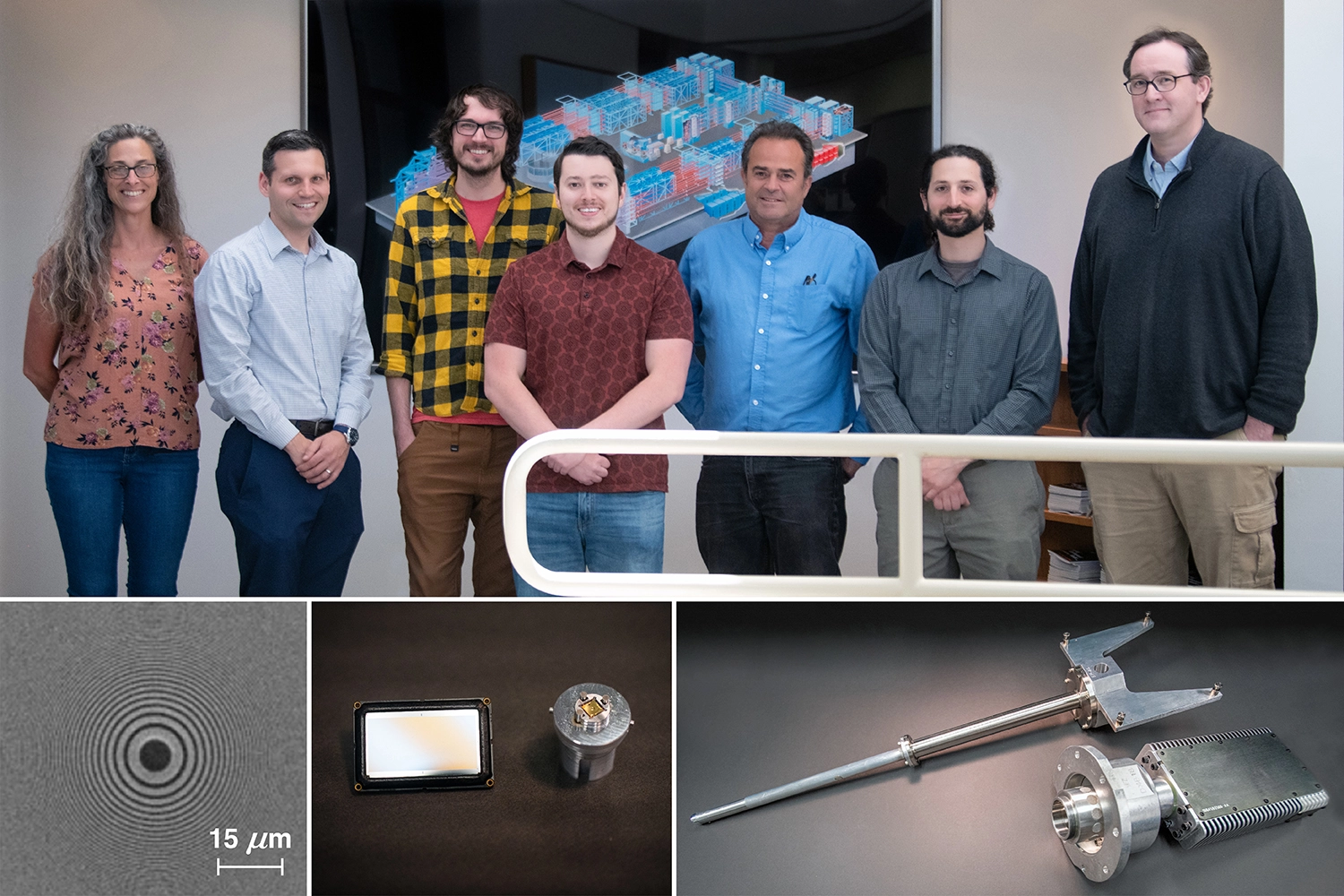
Shown top, left to right: The Research Team – Sallee Klein, Senior Research Engineer at the University of Michigan; Steven Ivancic, Group Leader for LLE's Diagnostic Development and Integration (DD&I) Group; Michael Michalko, Laboratory Engineer in LLE's DD&I Group; Trajen Cracium, Laboratory Engineer in LLE's Target Fabrication Group; Russ Raimondi, Mechanical and Manufacturing Engineer in LLE's Mechanical Engineering Group; Joe Katz, Research Engineer and Project Manager for the Multi-Frame Zone plate Imager; and Philip Nilson, Principal Investigator and Senior Scientist in LLE's Laser–Plasma Interaction Group. Shown bottom, left: Example image of a Fresnel zone plate showing its alternating opaque and transparent concentric rings. Shown bottom, center: hybrid complementary metal-oxide (hCMOS) sensor and zone-plate mounting assembly. Shown bottom, right: X-ray pinhole camera chassis used to deploy the zone-plate optic on OMEGA, and the hCMOS detector housing and mechanical interfaces used for these advanced flow-visualization applications.
Shock-induced hydrodynamics research at the Omega Laser Facility is advancing flow visualization at ultrahigh pressures. A new laser-driven radiography platform has been implemented for acquiring multiple x-ray backlit images of shock-driven hydrodynamic instabilities and mixing along a single line of sight and on a single-shot basis. The Multi-Frame Zone plate Imager (MFZI) platform couples, for the first time, a Fresnel zone plate imager to a hybrid complementary metal-oxide semiconductor (hCMOS) sensor. The integrated platform was developed by an engineering team from LLE, Lawrence Livermore National Laboratory and Sandia National Laboratories. An initial implementation of the system operates at over 40× magnification and has demonstrated micron-scale spatial resolution in a dual-frame mode using two 100-ps (10-10 s) x-ray flashes separated in time. This research is opening new possibilities for the real-space characterization of small-scale flow dynamics at millions to several billions of times atmospheric pressure—conditions that are ubiquitous in laboratory astrophysics and inertial fusion energy research, and where significant uncertainties in the flow dynamics may typically reside.


